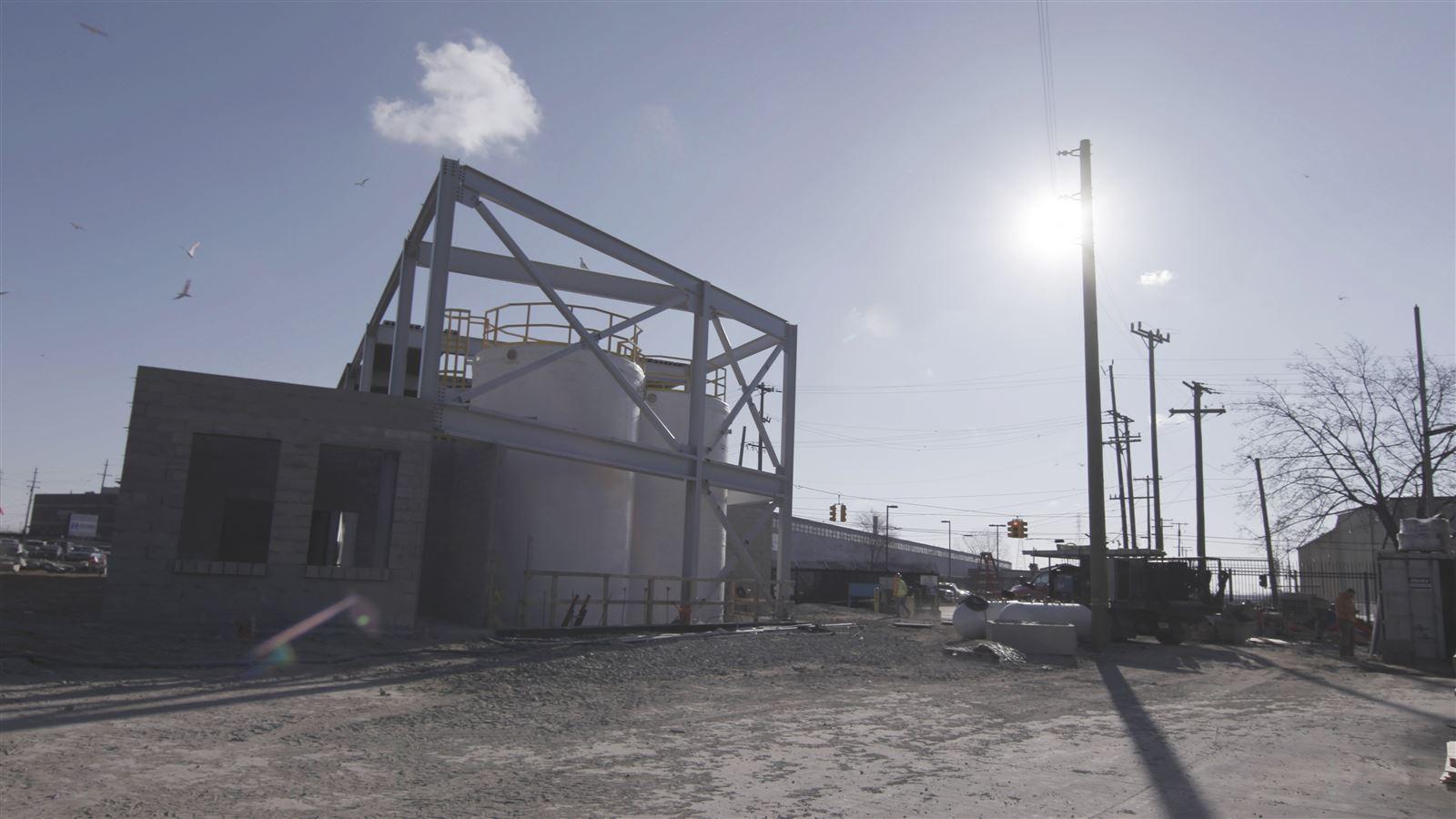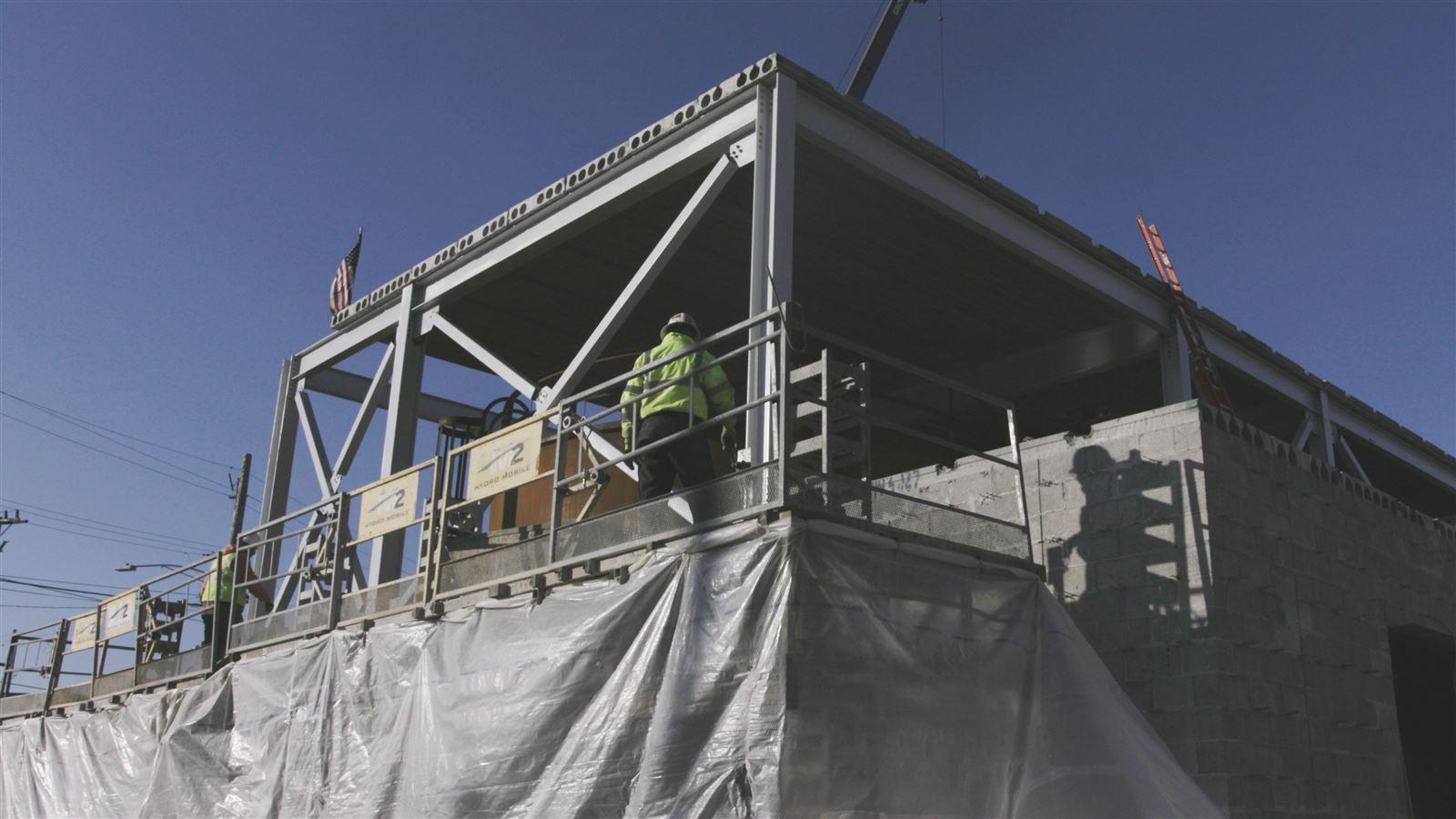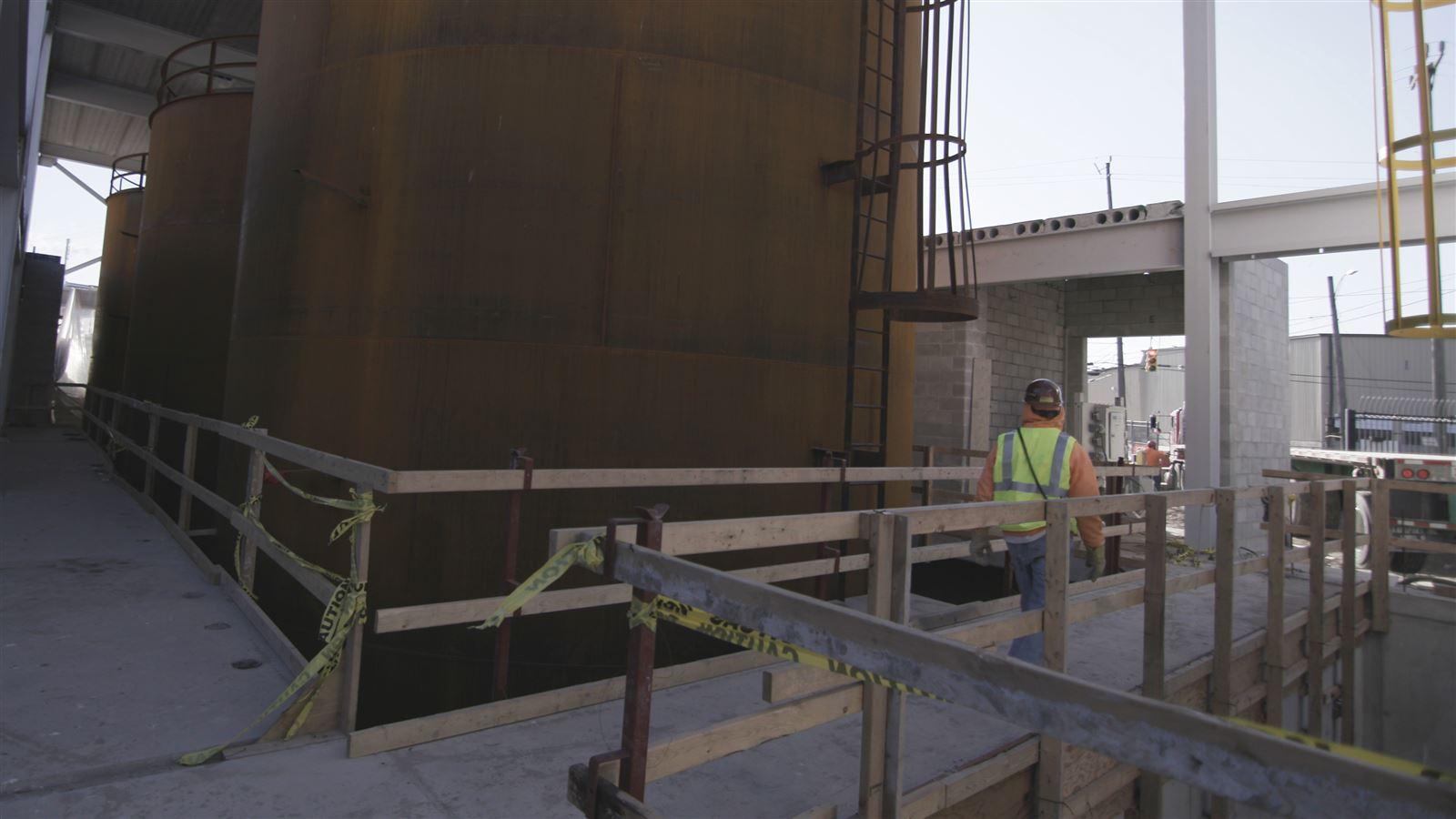A Progressive Solution for the Nation’s Largest Wastewater Treatment Plant
After a new outfall expansion approach in the early 2000s failed during construction, disinfection process upgrades were desperately needed. GLWA turned to CDM Smith for an alternative approach that could provide high value at a low cost. The solution—which utilized existing facilities to provide the adequate wastewater disinfection contact time required by the Michigan Department of Environment Quality (MDEQ)—set to deliver an innovative and compliant solution without compromising utility operations.
Solving for Overflow Situations on an Accelerated Timeline
Under most conditions, the GLWA’s wastewater treatment plant uses the 18-foot diameter Detroit River Outfall (DRO) to discharge plant effluent to the Detroit River, allowing the proper time for treated plant effluent to mix with a disinfecting chlorine solution and dechlorinating sulfur dioxide solution to meet NPDES permit requirements. During wet weather, however—when total flows swell from 600 million gallons per day (mgd) to 1,700 mgd—the utility relies on the Rouge River Outfall (RRO) to discharge a combination of secondary and primary effluent. Unfortunately, the RRO lacks the necessary disinfection capabilities as are provided for the DRO.
Given the delay in achieving disinfection of all discharges, GLWA determined that they needed to adopt an innovative progressive design-build delivery approach to meet the MDEQ’s accelerated schedule following a February 1, 2016 contract start. Adherence to this timeline required the 60% design to be completed by November 1, 2016 in order to obtain the Michigan Act 451, Part 41 Construction Permit and complete negotiations of the project guaranteed maximum price by January 2017. This alternative delivery construction schedule also required 100% plans and specifications for the first construction package by April 2017, all design packages completed by November 2017, and substantial completion of the facility by April 1, 2019.
A progressive design-build project approach—the first for GLWA—included the development of a large physical model of the complex outfall system to ensure that disinfection contact times could be achieved and that the system controls would function properly. Project specifics required:
- Modifications to existing gate and conduit systems
- Installation of chemical injection points, including baffle walls, flow meters and diffuser systems throughout
- Full installation of a new chemical building, which includes a whole new ovation control system
- Complete underground process yard piping and electrical duct bank throughout the existing system
- Startup, training and operational assistance
Technical Superiority and a Proven Partnership
CDM Smith’s wastewater process engineers have been instrumental in chlorine optimization throughout GLWA’s system for the past 15 years, including the design of several regional Combined Sewer Overflow (CSO) pumping, treatment, and control facilities. This extensive on-site experience helped them understand system flows and intricacies to best integrate the RRO disinfection into GLWA’s existing operation.
Armed with knowledge of the system’s inner workings, engineers began RRO improvements by performing detailed investigations into the outfall channel conditions and developing a detailed computational fluid dynamics (CFD) system model to estimate appropriate contact times. The model included a total of 15 million finite elements to represent the channel system, the flow of effluent between different inflow points, chemical diffusers, and discharge to both the DRO and RRO.
Design-Build Benefits for Unforeseen Project Challenges
As the largest single-site facility in the country, GLWA’s facility contained substantial utilities, many of which were not completely documented. As part of the project scope, CDM Smith was tasked with examining the four parallel 1,700-foot-long 15x15 foot conduits that provide the necessary contact time for RRO disinfection. Because some of these conduits had not been used for over 40 years, and others had been in constant use without inspection, CDM Smith provided on-site inspections using a Remotely Operated Vehicle (ROV) and dive team. This work identified several issues that needed to be addressed, primarily an 8-foot-deep sediment buildup along the length of two conduits. The sediment was tested, dewatered and disposed of in accordance with regulatory requirements and permit deadlines, which required close coordination with GLWA staff to ensure that all safety precautions were met and activities did not conflict with daily plant operations.
CDM Smith's construction team was able to partner with local and qualified subcontractors to help throughout the length of the design-build process, creating accurate estimates, addressing constructability concerns, and adhering to a schedule that accurately portrayed the project timeline. This allowed both designers and builders the chance to discuss operability issues and maximize system integration once construction was underway.
Constant collaboration through a forward-thinking progressive design-build approach helped ensure that cost implications, constructability and design specifics were fully understood. And ultimately, GLWA will be able to safeguard their water quality and increase efficiency by making use of recent advances in technology, as well as provide increased environmental protection and employee safety.

In order to sustain the growing population of the planet, we must think differently about how we manage our wastewater, and it’s this innovative thinking that inspires me.



